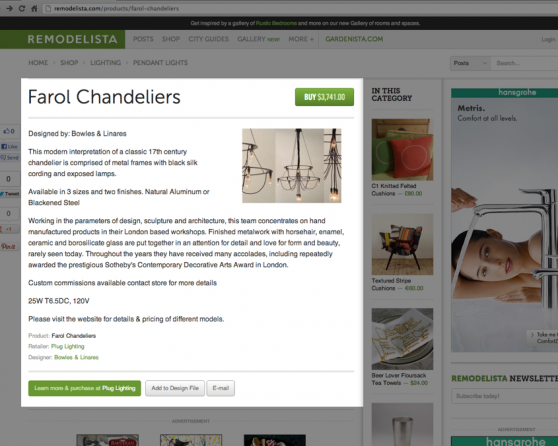
The legacy of media, even online, is the segregation of editorial content and advertising. Put simply, editors used content-management systems while the ads came through an ad server.
That’s a mistake, new-style digital publisher Say Media believes. Different systems mean different experiences. It’s no wonder that banner ads feel like intruders on most Web pages. Say believes its new platform, Tempest, will weave together content and ads (and commerce too) in a coherent fashion.
“We’re still stuck in a 10-year-old format, with the article on left, ad on the right, comments on the bottom,” said David Lerman, the company’s chief technology officer. “The new challenge is on across the device. Sponsored content is not a scalable solution; the banner on the side is not the right ad format. There’s room for the next generation of ad product.”
Publishers constantly work to figure out how to integrate marketing into the content. The latest vogue is for “native advertising,” which for most publishers looks a lot like a sponsored post. The debate is a bit beside the point, in Say’s view, since the big challenge is matching up the right ad format to wherever the visitor is accessing the content.
Lerman said the ad products are in development and will be launched in six months to a year. Right now, Say relies on its AdFrames unit and does custom campaigns with brands. It recently worked with Starbucks to create custom content and video interviews with Remodelista editors and designers, which was then turned into an ad unit and delivered across Remodelista.
Tempest is also built to support “editorial-driven commerce.” The bet: Editorial voice has more influence than a random recommendation because readers trust editors. This has obvious applications for a Say property like Remodelista.
“I just moved to San Francisco and am in the market for new furniture,” Lerman said. “I looked at Amazon for light fixtures and got ratings, etc. But it wasn’t a useful solution. At Remodelista, I find 10 results that our editor has selected. The point of view is more reliable than Amazon.”
Lerman believes modern publishers need to address marketing and commerce on one platform because “it lives in a syndicated world where not all content sits on the site. We need a new kind of platform for this new kind of media to take on all these problems.”
More in Media

Meta AI rolls out several enhancements across apps and websites with its newest Llama 3
Meta AI, which first debuted in September, also got a number of updates including ways to search for real-time information through integrations with Google and Bing.

Walmart rolls out a self-serve, supplier-driven insights connector
The retail giant paired its insights unit Luminate with Walmart Connect to help suppliers optimize for customer consumption, just in time for the holidays, explained the company’s CRO Seth Dallaire.

Research Briefing: BuzzFeed pivots business to AI media and tech as publishers increase use of AI
In this week’s Digiday+ Research Briefing, we examine BuzzFeed’s plans to pivot the business to an AI-driven tech and media company, how marketers’ use of X and ad spending has dropped dramatically, and how agency executives are fed up with Meta’s ad platform bugs and overcharges, as seen in recent data from Digiday+ Research.





